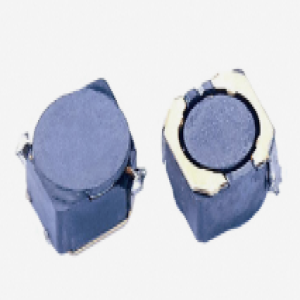
Fixed inductors are passive electronic components, which are often used for energy storage and filtering applications in circuits. They resist the change of current and store electric energy by storing electromagnetic energy. The fixed inductor is usually composed of a coil and a magnetic core. The coil is wrapped with a conductor. When the current passes through the coil, the magnetic field generated will store electric energy in the coil. The following is a detailed introduction to the fixed inductor:
1. Composition:
The fixed inductor is mainly composed of coils, magnetic cores and fixed terminals. The coil is usually made of conductive material, and the magnetic core is used to strengthen ADS1278IPAPR Inductor induction effect and reduce external interference of inductor.
2. Features:
-The fixed inductor has the characteristics of good stability, small size and light weight, and is suitable for various circuit designs.
-The inductance value can be adjusted as needed to meet the needs of different applications.
-The fixed inductor has high working efficiency and can quickly respond to the change of current.
-With good linear characteristics, the signal transmission in the circuit is more accurate.
-Strong durability and long service life.
3. Principle:
The working principle of fixed inductor is based on Lorentz force and self induction phenomenon. When the current flows through the coil of the fixed inductor, a magnetic field will be generated, and the magnetic force will cause the wires in the coil to generate electromotive force, thus storing electric energy. When the current stops flowing, the magnetic field will cause the current in the coil to continue to exist, releasing the stored electrical energy.
4. Application:
-Fixed inductors are widely used in power supply, communication, automotive electronics, industrial automation and other fields.
-In the power supply, the fixed inductor is used for circuit design such as filtering and voltage stabilization.
-In the field of communication, fixed inductors are often used in filtering, demodulation and other circuits.
-In automotive electronics, fixed inductors are used for * * systems, charging systems, etc.
-In industrial automation, fixed inductors can be used in motor drive, frequency converter and other equipment.
5. Discrimination:
-The main method to identify fixed inductors is through appearance and identification. Fixed inductors usually have identification model, inductance value, tolerance and other information.
6. Operating procedures:
● Installation requirements: correctly install and fix the inductor according to the installation instructions provided by the supplier, and pay attention to the safety protection measures.
● Working conditions: the working environment of the fixed inductor shall be relatively stable to avoid adverse effects of temperature, humidity, vibration and other factors on its performance.
● Maintenance: fixed inductor needs regular inspection to ensure its normal operation. Inspection contents include appearance, connection, looseness, insulation condition, etc.
● Precautions for use: Overload, high temperature rise, water inflow and other operations shall be avoided during use to extend the service life of the fixed inductor.
7. Development prospect:
According to market research and technology development trend analysis, the development prospect of fixed inductors can be considered from the following aspects:
(1) Technological innovation: The development of fixed inductors is driven by new materials, new processes and packaging technologies. With the continuous progress of material science and packaging technology, the size, performance and power density of fixed inductors have been significantly improved. For example, inductors made of new materials with high permeability and low loss can achieve higher inductance and frequency response under the same volume.
(2) Expansion of application fields: fixed inductors are widely used in power electronics, communications, automotive electronics, industrial automation and other fields. With the rapid development of these fields, the demand for miniaturized and high-performance fixed inductors will increase day by day. Especially in the field of new energy, such as electric vehicle charging piles, solar and wind power generation devices, fixed inductors have important application potential.
(3) Key technical requirements: With the pursuit of high performance, high efficiency and high reliability of electronic equipment, fixed inductors are required to have lower power consumption, higher temperature stability and smaller size. Therefore, the development of fixed inductors requires continuous innovation in materials, manufacturing processes, thermal stability, electromagnetic compatibility and other key technologies.
(4) International market demand: Fixed inductors are important electronic components worldwide, and the international market demand is huge. As a global manufacturing center, China has high-quality manufacturing and supply chain resources that can meet the demand for fixed inductors around the world.
In general, fixed inductors have broad prospects for development. Through technological innovation, expansion of application fields and meeting the needs of key technologies, fixed inductors will play a more important role in different industries and gradually realize the development trend of miniaturization and high-performance. At the same time, the competitive advantage of domestic manufacturing industry will also help Chinese enterprises to occupy a place in the international market.

